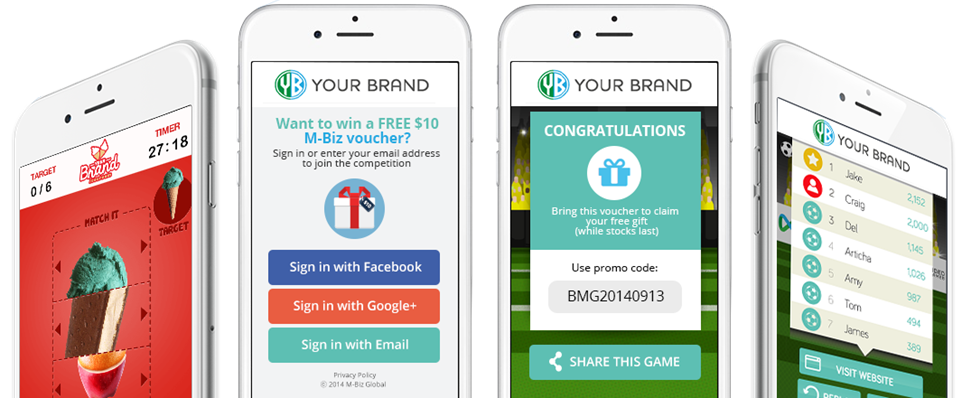
Brands have used Advergames for years.
Advergames are video games used for advertising to promote a brand and its message.
However, with new technology the costs to use advergames has reduced dramatically, making it accessible for companies of all sizes. With new tech comes the ability to measure and track the performance of using games in marketing campaigns.
This data is now showing that advergames can significantly enhance a brand’s advertising message – increasing engagement, conversions and user interaction.
Why do advergames matter? For one, providing games, rather than adverts, is a fun and valuable way to get your message across.
Secondly, games are one of the main activities on mobile devices. Getting your brand message across to mobile users is much easier and more effective using an advergame.
The advergame data we’ve reviewed has shown commonalities in how effective a game can be to boost a brand message and advert. Here are 5 tips that are based from our data-backed conclusions:
- Have low barriers to entry
The best Advergames have no, or very, low barriers for players to get started. No apps to download, no complicated registration process – just click and start playing.
For this reason simple web games, created in HTML5, are quickly becoming the standard for advergames. Everyone can access the games and start playing quickly and easily. With no barriers to entry more people can play and enjoy your advergame. More advergame plays means more people engaged with your advertising message.
Lowering the barriers of entry, by using simple web games, regularly results in between 88-92% game engagement. These are people actively playing the game and engaging with your brand.
- Ask for signups to rank scores
Once your players have finished the game, get them to sign in to register their score and rank on the leaderboard.
As the leaderboard is shared, users want to judge their performance against their friends and other game players. This is a great way to convert your players into leads for your business.
By including a signup page after the game play, to access the leaderboard, converts, on average, 33% of players into leads.
- Provide incentives for sign ups and replays
Of course, providing incentives can help boost sign up rates and the number of replays a game can get. If you provide the game as part of a competition, where the rewards are based on leaderboard ranking, then conversion rates go up.
If the incentive is high then players will replay the game multiple times – some up to 200 times! On average, an advergame is played 10x per player. This means that your brand and your promotion is repeated multiple times with every play of the game.
However, you don’t always need an incentive to drive conversion rates – the desire to rank on a leaderboard can be enough. A financial services company achieved a 43% signup rate by using an advergame to get leads.
- Make the game shareable
Your game needs to be integrated with social media. Players will want to share the game on Facebook and Twitter and this will boost awareness of your advergame.
Krispy Kreme used an advergame to promote a new range of strawberry doughnuts. They reported that 36.4% of its players interacted on Facebook – sharing and liking – as a result of playing the game.
This is the advantage of using web-based games, which can easily be shared across social media. This helps promote a viral effect of spreading your advergame and boosting brand discussion and engagements.
- Make it mobile friendly
Mobile is a growing channel for consumers to access social media and the internet. Games are one of the main uses of mobile devices, so it makes sense for brands to use games to engage with mobile users. Over 60% of advergame users access the games from their mobile devices. This means that your advergame should be optimized for mobile use.
However, make sure you cater for mobile users without discouraging desktop game players. This is why HTML5 is so useful for mobile games, it can be played on any device – resizing automatically.
Conclusion
Although many clients and campaigns are different, advergames have been used by large and small companies in both B2B and B2C businesses. The average results are impressive, outside of amazing individual performances.
All the results point to the effectiveness of using advergames to promote and communicate a message. Using the tips above, your business can provide an entertaining game and ensure that you maximize conversions and social engagement too.
Simple HTML5 web games are being used as advergames because of their affordability and flexibility as a mobile marketing tool. With no barrier to entry, users can play, register, and replay the advergame from any device. Social sharing helps boost the awareness of the game and the format helps boost conversion rates.
The future of marketing is clear. The future is games. Have fun and happy advergaming!

